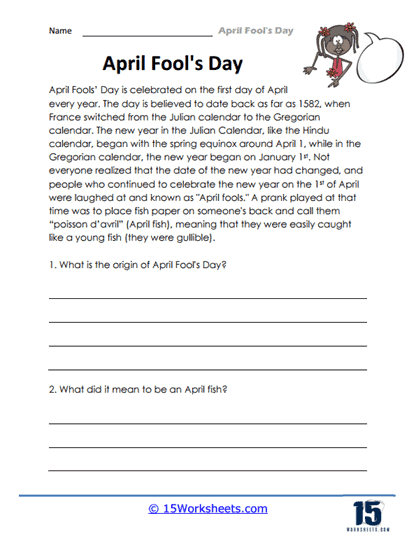The Origins

Worksheet Description
This educational worksheet provides students with a historical overview of April Fool’s Day, inviting them to explore the origins and traditions of this playful holiday. It traces the day’s beginnings to 1582 when France transitioned from the Julian calendar to the Gregorian calendar, which changed the celebration of the new year from the end of March to January 1st. The worksheet explains that those who continued to celebrate the new year in April, as they had on the old calendar, became the subject of jokes and were referred to as “April fools.”
The second part of the worksheet introduces the term “April fish” (Poisson d’avril in French), which symbolizes the easy-to-catch nature of young fish and, metaphorically, the gullibility of those tricked on April 1st. The worksheet includes two questions, prompting students to reflect on the information provided and to express their understanding of the historical context and meaning behind April Fool’s Day traditions. This serves not only as a reading comprehension exercise but also as a cultural lesson, giving students insight into how historical events can give rise to long-standing traditions that are celebrated worldwide.
